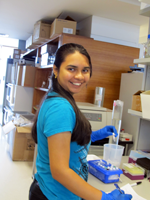02.14.2017 // Donald Maurice, Department of Biomedical and Molecular Sciences, Queen's University1/26/2017
Intracellular Signalling: It's not how much but where.The Maurice lab investigates the role that subcellular compartment-specific hydrolysis of cyclic nucleotide (cAMP and cGMP), by the cyclic nucleotide phosphodiesterases (PDEs), plays in promoting selective cyclic nucleotide-signaling in human arterial endothelial and smooth muscle cells. Since virtually all functions of these cell types are regulated by cyclic nucleotide-signaling systems, our studies may allow identification of novel therapeutic targets for management of multiple cardiovascular diseases, including atherosclerosis and restenosis, and in important vascular processes such as vasculogenesis and angiogenesis. 11:30-12:30 BioSci Rm. 3110
*** And Free Pizza Meet & Greet 12:30-1:30 in BioSci 3rd floor lunch room (Rm 3406)
|
Archives
February 2021
|




